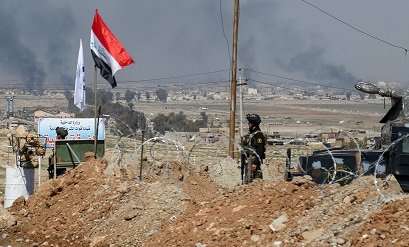High civilian mortality rates during the liberation of Mosul from ISIS

Mortality rates were higher during the 9 months of military liberation of Mosul, Iraq, than during the 29 months of exclusive Islamic State of Iraq and Syria (ISIS) control, according to a study published this week in PLOS Medicine. The population-based survey, conducted by Gilbert Burnham from Johns Hopkins University in Baltimore, Riyadh Lafta from Al Mustansiriya University in Baghdad, and Maha A. Al-Nuaimi from the National Center for Research and Treatment of Blood Diseases in Baghdad, demonstrated that high mortality rates resulted from the military offensive despite the use of modern precision-targeted ordnance.
Mosul, Iraq's second largest city, was invaded by ISIS on June 4, 2014. Iraqi forces, supported by coalition artillery and airstrikes, regained control of the city after an offensive that lasted from October 17, 2016 to June 29, 2017. No official data are available on civilian deaths and injuries during ISIS control or during the Iraqi offensive. In their study, Burnham and colleagues undertook household surveys in Mosul immediately after the military campaign, to count injuries, deaths, and kidnappings during these periods.
The 1,202 sampled households included 7,559 people, and 628 deaths were reported for the full time period (June 4, 2014 to the time of the survey in 2017), a mortality rate of 2.09 deaths per 1,000 person-months. In the 29 months of ISIS-exclusive control, mortality rates were 0.71 and 0.50 reported deaths per 1,000 person-months for males and females, respectively. During the 9 months of the military conflict, these mortality rates jumped to 13.36 and 8.33 deaths per 1,000 person-months. The leading cause of reported deaths from intentional violence in the 1,202 households was airstrikes, accounting for 201 civilian deaths, followed by 172 deaths from explosions.
The estimates from this study are subject to many limitations, including survivor bias, the reliance on pre-conflict population distribution figures for sampling, and potential recall bias among respondents. Nonetheless, the estimates provide the first systematic evidence of the human losses associated with the occupation and liberation of Mosul. The authors state, "[o]ur findings should be viewed as providing an important, though necessarily an incomplete, picture of events associated with high intensity warfare in a densely populated city."
More information: Lafta R, Al-Nuaimi MA, Burnham G (2018) Injury and death during the ISIS occupation of Mosul and its liberation: Results from a 40-cluster household survey. PLoS Med 15(5): e1002567. doi.org/10.1371/journal.pmed.1002567
















